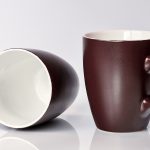You can register a shape as a trademark. Or you can try, at least. Generally speaking, the odds will not be in your favor.
To register a shape as a trademark, you will need to prove that the shape has acquired the distinctiveness necessary to function as a trademark. That is, you can register a shape as a trademarks when consumers, on sight, will identify that shape as indicating that your enterprise is the source of your product or service.
This Article will discuss the registration of a shape as a trademark, as well as the odds that your shape has acquired the necessary distinctiveness.
First, what sort of shapes are we talking about? Who is trying to register shapes as trademarks, anyway? Who has successfully registered a shape as a trademark?
Register a Shape As a Trademark When It Is Distinctive
As noted above, a product or packaging shape can be registered as a trademark only when it has acquired distinctiveness.
What does this mean?
A “mark” of any sort can be registered as a trademark only when consumers come to identify that mark with the person or enterprise selling the particular product or service identified on the registration certificate.
This applies to any sort of “source identifier,” whether it is a business name, product name, slogan, logo, color, or shape, in Michigan or elsewhere in the US.
A good, strong trademark is one that is inherently distinctive. That is, it is not generic or commonly used. It is not in use in widespread instances across the field o f US commerce.
The strongest sort of trademark, in fact, is called a “fanciful” trademark. It is an invented, made-up word or other mark that has no meaning or use outside of its use identifying a product or service sold.
The challenge in registering a shape as a trademark is that it is, automatically, presumed by the US Patent and Trademark Office (USPTO), not to be inherently distinctive. (The USPTO is the Federal agency with which trademark registration applications are filed.)
It is possible to invent a shape that is not commonly recognizable in use elsewhere, sure.
However, caselaw in the Trademark Trial and Appellate Board (TTAB) and Federal Courts is well-settled on this point. “[P]roduct designs can never be inherently distinctive and will always require evidence of acquired distinctiveness or secondary meaning to be registrable as marks,” one decision intones.
That is, no matter how weird and squiggly your shape-mark may be or how unusual your product packaging may be (to you), you are still going to have to fight an Office Action USPTO refusal more like than not.
You are going to have to argue and prove with evidence that you can register your shape as a trademark because it has acquired distinctiveness.
When Has a Shape Acquired Distinctiveness?
A shape has acquired the necessary distinctiveness to be registered as a trademark when you can provide the evidence proving that it has.
This circular statement is not very helpful, to be sure.
However, from a process standpoint, this is what it amounts to. In order to register a trademark that the USPTO refuses as generic, descriptive, or non-registrable because it is a shape, you need provide evidence to the contrary.
You will need to respond to the USPTO Office Action (refusal) with legal argument and real-world evidence that consumers recognize that your shape identifies your enterprise as the source of your product or service.
What sort of evidence will suffice?
Evidence of Acquired Distinctiveness
Generally speaking, to prove that your shape has acquired the necessary distinctiveness to be registered as a trademark, you may submit evidence of:
- Prior trademark registrations;
- Consistent and exclusive use for 5 tears;
- Other evidence proving the point.
This applies to any mark refused by the USPTO as generic or descriptive, however.
With regard to registering a shape as a trademark, as with any other, the mark must have been in continuous use in interstate commerce (across state lines) for 5 continuous years.
However, beyond that, the key is to prove to the USPTO that the primary significance of the shape is not the product itself but the source of the product.
That is, when a consumer spots, say, a hamburger in the marketplace, he or she will not simply think, “That hamburger is a circle. Hamburgers are usually circular.” He or she will, instead, think, “McDonalds!”
Even a brand as well known as historically well-rooted as McDonalds has not attempted to register a circle to indicate its restaurant chain as a source of hamburgers in the marketplace.
Circles are everywhere. Nearly all hamburgers are circular.
What if the hamburger was, instead, formed into a strange 5-pointed pentagram?
The case might be better for the now sort of Satanic McDonalds in this case. But still not airtight. Other pentagrams appear in many other instances in the consumer marketplace. Perhaps some others are food- or meat-related.
Additional evidence is required, even if McDonalds has been selling its weird pentagram burger for 5 or more continuous years. This is what is meant by the 3rd bullet-point, above. Other evidence will be required to prove acquired distinctiveness.
What Other Evidence Will Prove You Can Register a Shape As a Trademark?
Additional evidence is needed to register a shape as a trademark on the basis of acquired distinctiveness.
In particular, courts have developed a rough list of 6 interrelated factors used to determine whether a shape, or any other proposed trademark, as acquired “secondary meaning.” That is, whether the shape or mark now also serves as an indicator of the source of the produce or service being sold.
These 6 factors are:
- Association with a particular source by actual purchasers;
- Length, degree, and exclusivity of use;
- Amount and manner of advertising;
- Amount of sales and number of customers;
- Intentional copying;
- And unsolicited media coverage of the product embodying the shape or other mark.
Thus, the evidence that must be supplied in response to a descriptiveness or “merely ornamental” refusal of an application to register a shape as a trademark should support an argument based on these factors.
For instance, the first factor is typically proven with customer surveys.
Advertising purchase and placement records, copies of advertisements, customer sales documentation, and copies of news and other media articles are examples of supporting evidence.
If McDonalds is the only one selling a hamburger shaped like a pentagram in the entire food industry, has peppered the national media with advertising, and can supply evidence that it has sold like hotcakes across the US, garnering loads of (hilarious) media coverage along the way for more than 5 continuous years … It has a chance.
Registering a Shape As a Trademark: Further Issues
Even if you prove acquired distinctiveness, there may be other reasons why the USPTO could refuse your shape’s trademark registration application.
If your shape is merely “functional,” your trademark application may also be refused. That is, if your shape is a result of functional necessity and not a unique design decision, it will not be registrable as a trademark.
In our McDonalds example, if all hamburgers would crumble into bits on the grill unless they were formed in a pentagram shape, the pentagram would be a function of the product. It would not have been a design decision.
Likewise, if the shape is inherent to the product, it will also be refused.
Again, in our McDonald’s example, if the shape that company were attempting to register was not the circular outline of the burger but the rough texture of the burger itself, it would be refused. All ground beef has that same texture. It can’t be avoided
It’s an inherent quality.
Who Has Successfully Registered a Shape As a Trademark?
Has anyone ever successfully registered a shape as a trademark? Why, yes, they have
In current headlines, the Olympic runner Usain Bolt is now attempting to register as a trademark the shape of his “iconic victory pose.” Outcome to be determined, but that’s one pending example.
The shape of the Coca Cola bottle is, otherwise, an example of shape registered as a trademark successfully.
Likewise, the Hersey’s Kiss candy shape has been successfully registered as a trademark.
These are just a few examples. Is yours next?
How a Michigan Trademark Attorney Can Help
This discussion should pre-answer the question, “Why do I need to hire a trademark attorney?”
Litigating with the USPTO or third-party trademark registrants is no different than litigating in any other Federal legal context. Just as this writer doesn’t perform his own surgeries, neither should you attempt to register your shape as a trademark, or anything else, without expert legal assistance.
In the case of shape trademarks, you are going to need it. The refusal will, at least initially, be inevitable. And only a licensed US trademark attorney can represent you before the USPTO.
Noble Path Trademark Law is a boutique US law practice located in Metro Detroit and assisting entrepreneurs, solopreneurs, artists, musicians, start-ups, and larger enterprises with robust intellectual property portfolios, and others in all industries with trademark registration, trademark renewal, and Office Action refusal response matters.
We offer virtual consultations, premium customer service, and the expertise you need to maximize your odds of trademark registration success.






